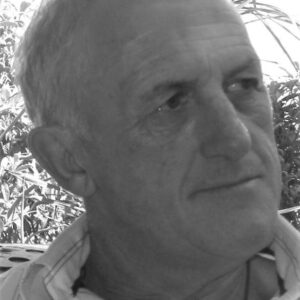Issues About Resisting Change
In Part 1, the background of human nature was discussed with the view that technology has played a part in polarizing people's views. Ideas are rapidly spread with amazing speed through social media platforms and have led to extremist positions and human conflicts. A holistic approach to education is needed to prevent narrow positions on subjects and this is discussed in the sections below.
The Holistic Debate
Holistic education is advocated for all learners, but this situation has also shown resistance to change over time because of perceptions of those in power. Technology can help by promoting awareness and truth.
The Background Of The Mind-Body Debate
The dualism between mind and body has dominated Western thinking from the time of Plato, the Greek philosopher. This was seen in Greek and Roman education, which sought mental and physical harmony (homeostasis) in human development. The approach demonstrated an understanding of the left brain analytic and right brain assembly functions, connected and facilitated through the communicative process. The Rhetoric and Grammar Schools promoted the whole functioning of a person through a focus on communicative competence acquired from formal spoken language opportunities, like oratory, as well as drama and sport.
The schism between mind and body originated in the 17th century with the emerging science of medicine, which regarded disease and illness as just a mechanical breakdown in body machinery. This brought it into conflict with the Catholic Church. The French philosopher, Descartes, sought to accommodate tensions by allotting the intangible "soul" to the care of priests and the physical "measurable" body to that of medical practitioners. This led to a component rather than a whole process approach to teaching and therapeutic interventions.
Later, in the 19th century, the Church initiated educational opportunities for those not able to afford tutors, which reinforced the divide. Formal, group-style learning concentrated on the acquisition of abstract, arbitrary knowledge, generally remote from daily life and real, physical experiences. Curriculum content was driven by political not the personal concerns of learners. Although in the 1970-80s, child-centered education was strongly advocated by psychologists, like Susan Isaacs, this philosophy did not take permanent hold and the introduction of the National Curriculum in Britain (1989) reinforced strict, prescribed programs for students with an emphasis on regular standard tests and examinations, which has not facilitated the integration of arts and sciences.
The Revival Of Holistic Views
Experts now question the 20th-century science’s distinction between mind and body. Quantum theory, in physics, describes how individual parts of a system are fully integrated to behave as a unified whole. In 1934, Haldane, the biologist, developed quantum theories of human consciousness. Boem (1951) observed a close analogy between human thinking, inner experiences, and quantum processes. Modern theories look for quantum coherence in neural structures within the single neuron, and studies now make it clear that there is coherence between many different neurons (Zohar & Marshall, 2000). Such information focuses on how meaning occurs, providing a new perspective within cognitive science, which previously viewed the mind as a computation machine in just the way the body was considered.
The Need For Holistic Approaches
Many students struggle to make meaning of educational curricula content, and many human diseases and illnesses are only partly relieved by conventional medicine. How our feelings, emotions, personalities, and relationships affect health and education is now of central concern in a world of pandemics. At the heart of science lies the phenomenon that supports a holistic approach—the placebo response—in which an inactive medication, treatment, or management has a positive effect, providing evidence of the power of mind over body. Belief and faith are viewed as the force at work here. Professor Benson, (1996) of the Mind/Body Institute at Harvard University in America, reported from research that the placebo response can be as high as 90% in alleviating disease, illness, and mental disturbance. The trust relationship with the practitioner has a powerful influence on the outcome. A DFCOT (Practitioner Doctorate) participant on a European Union project to advance professional education at the London College of Teachers was a psychotherapist working to alleviate stress among school children, demonstrating the importance of understanding mental health.
The power of belief and expectation may be harnessed by eliciting the relaxation response, a mental state that triggers significant physiological, measurable changes, such as reduced stress-hormone levels and muscle tension. Techniques focusing on the mind, like differential relaxation, visualization, diaphragmatic breathing, biofeedback, and hypnosis (among others) can induce a relaxed response for better function. Educational and medical practitioners employ such methods to improve the learning and well-being of people. For example, at the North Wales Business and Language School, the day begins with relaxation, visualization, reflection, and review, as experience shows that this accelerates learning. Sport psychologists are masters of these techniques in order to achieve optimum performances for their clients (Dr. Luke Sage’s lecture to DFCOT students on the Nuffield Motivation Project).
In holistic approaches, spiritual concerns (inner self-growth) rank with those of mind and body. We constantly puzzle about what life is about with a need to understand the purpose of what we do and our potential to undertake what is expected of us. This self-awareness and understanding underlie our ability to achieve and be successful by encouraging us to become observant and reflective in order to review and refine actions. In the struggle to make sense of what is happening around us, certain activities create a supportive framework to connect us to our inner selves. These activities include communicative opportunities, like talk, art, literature, music, dance, drama, sport, communal events, family, worship, and play which all encourage participation, discussion, and greater self-awareness. Such active, relaxing, and generally enjoyable experiences help us to become aware of ourselves and understand the reality of our strengths, limitations, vulnerability, and dependency.
Benson’s studies (1996) found that relaxation activities increased spirituality (self-awareness). Antibody levels of students were higher on days when they felt buoyant and positive and lower on days when they felt stressed, depressed, and unable to cope. The relationship between mind and body cannot be ignored when considering optimum performances for people.
Cultures With A Mind-Body Philosophy
Eastern cultures, like Japan, embrace reflection (Hansei) as the core, communicative process for developing effective mind-body performances. The Japanese word "han" means to change and "sei" to look back, review, reflect, and examine for producing the best result.
There are 6 principles observed in the Hansei process:
- Reflection on action is essential for effective results, focusing on issues that need specific attention;
- Looking inwards rather than outwards acknowledges actions as both intellectual and emotional events involving communication with oneself and others (intra and inter communication);
- Reflection benefits from communication with others rather than relying on one’s own response to events;
- Reflection must be ongoing and not just at the end of an activity if it is to bring about change for good;
- Reflection allows an event to be seen as part of a larger on-going collaborative, cooperative and communicative process between people;
- All activity involves problem-solving, requiring a sociological rather than a technological approach, with group decisions more effective for choosing best-fit solutions and their implementations.
The Japanese view is that without ongoing reflection that involves constant communication with others we go blindly on our own way creating unintended consequences and failing to achieve anything useful. Reflection is at the heart of moral development and necessary for us to behave in an ethical way. It encourages us to respect the conventions and values of the community that we live in so enabling successful actions. Thus, the moral curriculum has primary value in Japanese schools with formal, spoken communication encouraged in order to develop appropriate thinking and behavior and enable the shift from oracy into literacy. This emphasis is attributed to Japan's sustained academic success and lack of learning and behavior difficulties when compared with Britain (Sage et al, 2003-9).
In Japanese education, Hansei is part of all learning with participants constantly reflecting on and refining what they are doing. A comprehensive review of events takes up the final third of each lesson when every student gives their response to guide further progress. This actively involves students in making and sharing meanings which research shows produces the most effective long-term learning (National Training Laboratories, 1996).
Therapeutic Mind-Body Approaches To Help People Cope
For the therapeutic professions, the essential aspect of a person is the way they think, feel, relate, communicate, and generally behave. Supportive approaches aim to harness the power of thoughts, feelings, imagination, communication, and actions in order to influence the physical, mental, emotional, and social growth of an individual. Therefore, the nature of consciousness and how thoughts and feelings become buried to unconsciously influence ongoing behavior are the starting point. Relaxation and expression of feelings and ideas begin the self-awareness process so that individuals can understand themselves and deal with problem areas and limitations that hamper progress. A DFCOT (Practitioner Doctorate) participant was able to enlighten the group about these approaches from her work supporting students with behavior and learning problems in school.
Many educational approaches across the world, such as Montessori, Peto, and Steiner, are based on the fact that until learners understand who and what they are, academic learning is impossible. The 10 top-performing countries do not start formal learning until around 7 years, in line with the view that until this age the right brain is focusing on the whole rather than parts of events. After this stage, the left brain comes into play with an analytic role that can then cope with looking at how events are made up of distinct, component parts. Thus, in these cultures, students are attempting activities which involve putting together events to make meaning, like reading, when the brain is able to manage this easily. In Britain, brain and body development has a limited role in curriculum planning, which undoubtedly is a reason for the high numbers of students with special educational needs needing extra support. Until a holistic policy for learning is introduced, the situation is not likely to significantly improve.
This tendency to compartmentalize thinking has worked against the integration of arts and sciences in learning, but the Japanese are demonstrating the importance of art to think imaginatively. Kana Inagaki (2016) describes how executives from Toyo Aluminium are meeting not for analyzing figures but for finger painting. The company shows shrinking revenues and no hope of expanding abroad, so are turning to the arts for inspiration and painting their way to growth. Hiroshi Yamamoto has produced an abstract, "a red diagonal line running across pools of color, signaling his intention to lead the company upwards (p.50)." Inagaki reflects that any activity that promotes communication has to be welcomed, and engaging the right brain is the way to think laterally in solving problems.
The evidence for the need to improve holistic thinking is seen in present British examples of student indoctrination. Independence of thought is under attack even at the premier public schools, like Eton. In December 2020, Dr. Luke Martin, head of perspectives, resigned saying in his letter of resignation:
There is a growing promotion of a so-called "progressive" ideology that claims to be inclusive, tolerant, and kind. This ideology is, of course, present in other institutions. What has dawned on me over the last few years is that it is remarkably similar to the forms of religious fundamentalism… if you disagree with it, you’re excluded; if you think differently, you’re not tolerated; and if you raise objections, you’re mocked or face formal discipline (reported in the Daily Telegraph, 3.12.2020, pp.13).
This was in response to another member of staff who had been sacked over recording a lecture questioning current radical feminist orthodoxy that suggested males were a destructive force in society. The reaction has been huge in social media, which undoubtedly helped a petition of past and present students accusing the school of institutional bullying.
Review
The article advocates a more holistic approach to education which integrates both arts and sciences, using literature (fact and fiction) as the mode to link these disciplines. This enables learners to conceptualize more easily through fictional and factual stories, and the hope is that we will now start a serious debate on how to implement such a policy to improve standards and assist students to cope more effectively in today’s uncertain world. Blended learning, using a range of technology devices, can introduce a wider, more flexible approach to all subject learning, assisting deeper, more tolerant thinkers. Academics are increasingly canceled for their particular views if they do not agree with senior management and this behavior is detrimental to a positive, progressive society. Herbert Marcuse, the German Philosopher (1969) reminds us: "Society cannot be indiscriminate in its tolerance of speech, where freedom and happiness themselves are at stake." It is our survival we are fighting for and technology has a part to play in supporting freedom of thought, tolerance, and a better society.
References:
- Benson, H. (1996) The Power and Biology of Belief. New York: Scribner
- Bohm, D. (1951) Quantum Theory. London: Constable
- Haldane, J. (1934) Fact and Faith. London: Watts and Co. Thinker’s Library
- Inagaki, K. (2016) Finger Painting while Japan Burns. This Week (5/3/2016). London: Dennis Publishing Ltd.
- Marcuse. H. (1969) An Essay in Liberalism. http://libgen.org/search.php
- National Training Laboratories, Bethel, Maine (1996) A Guide to Pre-service Training. Ameri Corps National Profiles
- Sage, R. (2010) Meeting the Needs of Students with Diverse Backgrounds, Network/Continuum, now Bloomsbury.
- Sage, R. (2016) The PEEP EU Project for the Development of Professional Practice.
- Sage, R., Rogers, J. and Cwenar, S. (2002-9) A UK-Japan initiative to develop the successful 21st Century citizen. (3 research reports: The University of Leicester and Nara University, Japan).
- Sowell, T. (1995) The Vision of the Anointed: Self-Congratulation as a Basis for Social Policy. New York: Basic Books.
- Wallach, P. & Miller, L. (1988) Language Intervention and Academic Success. Boston: Mass., Little, Brown & Co.
- Zohar, D. & Marshall, I. (2000) Spiritual Intelligence: The Ultimate Intelligence. London: Bloomsbury








